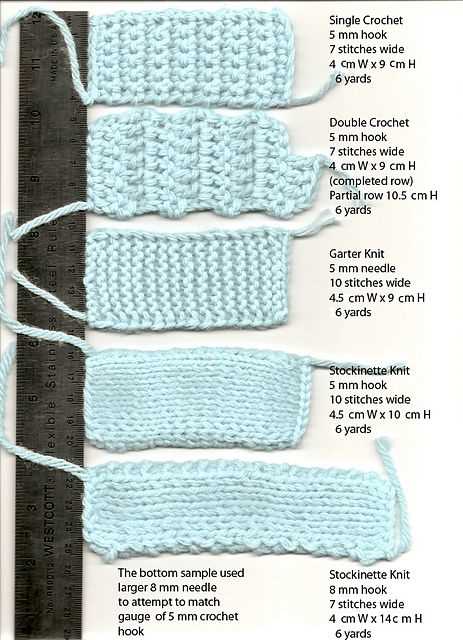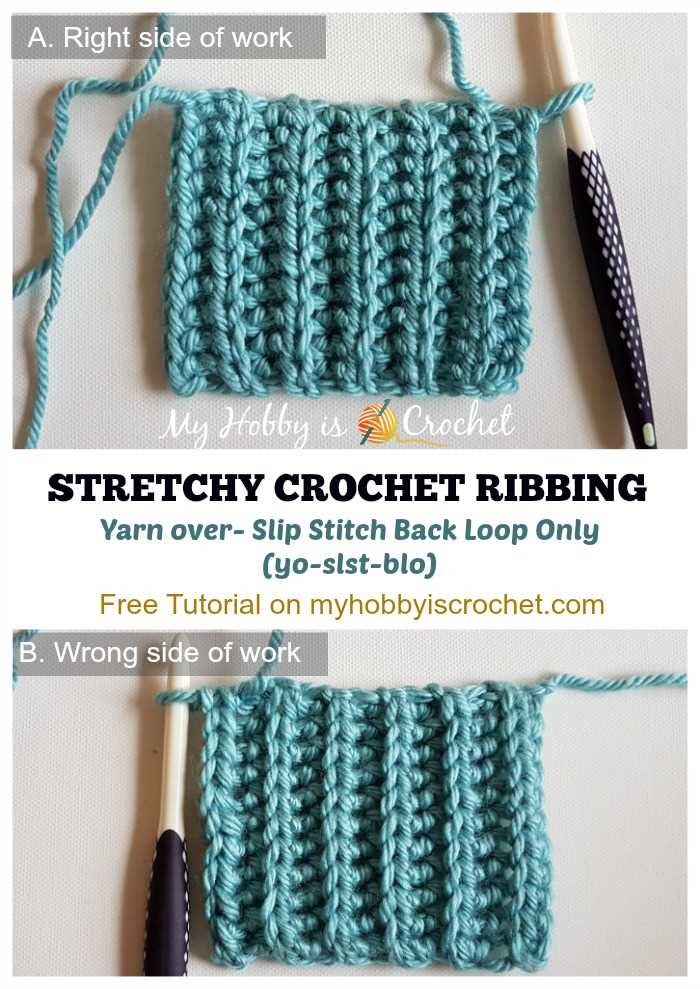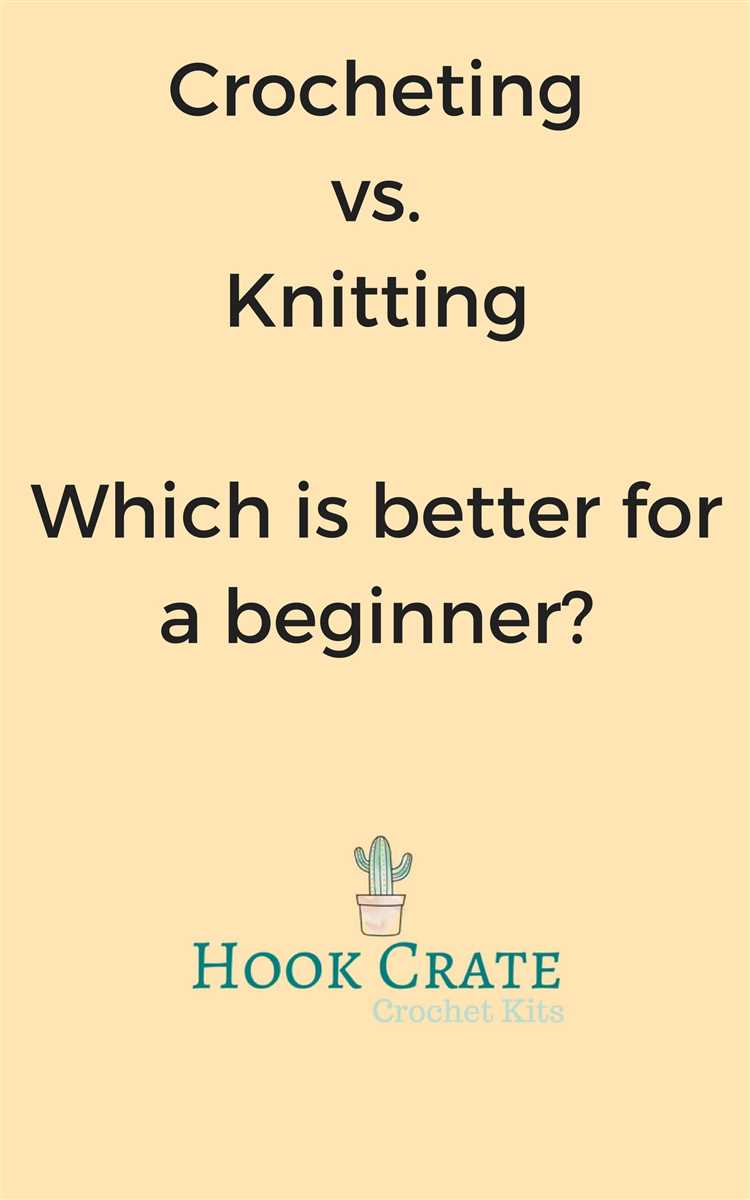Knitting and crochet are two popular crafting techniques that have been around for centuries. They both involve working with yarn and creating beautiful, intricate designs. But which one is better? It’s a question that many crafters have debated for years. In this article, we’ll take a comprehensive look at both knitting and crochet and compare them in terms of difficulty, versatility, and the types of projects that can be created.
Knitting is a technique that uses two or more knitting needles to create stitches that are then worked together to form a fabric. It is known for producing a tightly woven fabric that is warm and durable. Knitting can be used to create a wide range of items, including sweaters, scarves, socks, and even blankets. It requires a certain level of skill and can be more time-consuming than crochet.
Crochet, on the other hand, uses a single crochet hook to create stitches that are looped together to form a fabric. It is a looser technique that creates a more open, textured fabric. Crochet is known for its ability to create intricate patterns and designs, making it perfect for items like hats, shawls, and doilies. It is generally considered to be easier to learn than knitting, making it a great choice for beginners.
When it comes to versatility, both knitting and crochet have their strengths. Knitting allows for more intricate stitch patterns and shaping, making it great for items that require a close fit. Crochet, on the other hand, is more adaptable and allows for more freedom when it comes to creating shapes and designs. It is also easier to undo mistakes in crochet, as each stitch is worked individually.
In conclusion, the debate of whether knitting or crochet is better ultimately comes down to personal preference and the type of projects you enjoy creating. Both techniques offer unique benefits and challenges, and both can be used to create beautiful, one-of-a-kind pieces. Whether you choose to pick up knitting needles or a crochet hook, the most important thing is to have fun and enjoy the process of creating something with your own two hands.
Knitting vs Crochet: Overview
Knitting and crochet are two popular hobbies that involve creating fabric from yarn or thread using different techniques. While both crafts produce beautiful and unique items, there are some key differences between knitting and crochet that may influence which one you choose to pursue.
- Tools: Knitting requires two knitting needles, while crochet uses a single crochet hook.
- Technique: Knitting involves creating fabric by interlocking loops of yarn with the knitting needles, while crochet uses a hook to form loops and connect them to create fabric.
- Speed: Generally, crochet is considered faster than knitting since it requires fewer stitches to create the same amount of fabric. However, this may vary depending on the individual’s skill level and the complexity of the project.
- Stitch Variability: Crochet offers more flexibility in terms of stitch patterns and variations. It allows for more intricate and textured designs, while knitting has a more uniform and structured appearance.
- Design Possibilities: Both knitting and crochet can be used to create a wide range of items, including clothing, accessories, home decor, and more. However, crochet is often preferred for items that require more drape and elasticity, while knitting is often favored for structured and fitted garments.
- Learning Curve: Some people find knitting easier to learn due to its more straightforward technique, while others find crochet easier because it only uses one hook. The learning curve may vary depending on individual preferences and learning styles.
Ultimately, the choice between knitting and crochet comes down to personal preference and the desired outcome of your projects. Some individuals may enjoy the repetitive nature of knitting, while others may prefer the versatility and creativity of crochet. Both crafts offer endless possibilities for creativity and relaxation, so it’s up to you to decide which one suits your interests and style best.
Complexity and Learning Curve
When it comes to complexity and learning curve, both knitting and crochet have their own unique challenges.
Knitting:
- Knitting is generally considered to have a steeper learning curve compared to crochet.
- It involves using two needles and working with multiple stitches at once, which can be more challenging for beginners.
- There are various knitting techniques, such as purling, cabling, and lace knitting, that require mastering different stitch patterns and techniques.
- Knitting patterns often involve more intricate designs and shaping, which may require advanced skills and experience.
Crochet:
- Crochet is usually considered to have a more straightforward learning curve, making it more accessible for beginners.
- It involves working with a single hook and using only one stitch at a time, which can be easier to grasp for newcomers.
- There are various crochet stitches, such as single crochet, double crochet, and treble crochet, that can be combined to create different patterns.
- Crochet patterns often involve simpler designs and shapes, which can be more suitable for beginners.
Ultimately, the complexity and learning curve of knitting or crochet will depend on the individual’s preferences, learning style, and patience. Some people may find knitting more intuitive, while others may prefer the simplicity of crochet. It’s important to choose a craft that aligns with your interests and learning abilities to ensure an enjoyable journey.
Versatility and Range of Projects
Both knitting and crochet offer a wide range of projects that can be created, allowing for creativity and customization. However, there are some differences in the types of projects that each craft excels in.
Knitting:
- Knitting is often favored for creating garments, such as sweaters, scarves, hats, and socks.
- It is also well-suited for intricate stitch patterns and complex designs.
- Knitting allows for the creation of fine, delicate fabrics, making it a popular choice for lace projects.
Crochet:
- Crochet is known for its versatility and ability to create a wide range of projects, including garments, accessories, home decor items, and amigurumi (stuffed toys).
- It is particularly well-suited for creating three-dimensional projects and adding embellishments, such as flowers and appliques.
- Crochet stitches are often more textured and can create thicker fabrics, making it a good choice for cozy blankets and thick winter accessories.
Ultimately, the choice between knitting and crochet for a specific project comes down to personal preference and the desired outcome. Both crafts offer a wealth of possibilities and can be used to bring any creative vision to life.
Speed and Productivity
When it comes to speed and productivity, both knitting and crochet have their advantages and disadvantages.
Knitting:
- Knitting generally requires fewer stitches per inch compared to crochet, which means that it can be faster to complete a project.
- Knitting needles allow for multiple stitches to be held at a time, allowing for more complex patterns and stitches to be created.
- Knitting can be more precise and consistent, as the size of each stitch is predetermined by the size of the knitting needles being used.
Crochet:
- Crochet hooks typically have a larger surface area than knitting needles, allowing for larger stitches to be made. This can result in faster progress on a project.
- Crochet stitches can be completed more quickly, as they involve fewer steps than knitting stitches.
- Crochet allows for greater flexibility and adaptability in patterns, as stitches can be easily added, skipped, or adjusted as needed.
In terms of overall productivity, it really depends on the individual and their personal preferences and skill level. Some people may find knitting to be faster and more efficient, while others may find crochet to be more enjoyable and productive.
It’s important to note that both knitting and crochet can be time-consuming and require practice to become proficient. Ultimately, the speed and productivity of these crafts will vary from person to person.
Portability and Convenience
When it comes to portability and convenience, both knitting and crochet have their advantages and disadvantages.
- Knitting: Knitting projects tend to be more portable compared to crochet. This is because knitted items require fewer tools and materials, making them easier to carry around. Knitting needles are typically straight, lightweight, and come in various sizes, which allows for easy storage and transportation. Additionally, knitting projects often use a smaller number of stitches, making them less bulky and more compact.
- Crochet: On the other hand, crochet projects have the advantage of requiring only one tool – a crochet hook. This makes crochet projects more convenient to take on the go, as there are fewer items to carry. Crochet hooks are also compact and can easily fit into a bag or pocket. Additionally, crochet stitches are typically more secure and less likely to unravel, which can be beneficial when working on projects while traveling or in public settings.
Ultimately, the portability and convenience of knitting versus crochet will depend on personal preference and the specific project being worked on. Some individuals may find knitting more convenient for travel, while others may prefer crochet for its simplicity and ease of carrying around.
Texture and Stitch Variety
When it comes to texture and stitch variety, both knitting and crochet offer a wide range of options to create unique and distinct patterns. However, there are some key differences in the way each technique achieves these textures.
Knitting:
- Knitting primarily utilizes two basic stitches: the knit stitch and the purl stitch. By combining these stitches in different ways, knitters can create a variety of textures such as ribbing, cables, lace, and more.
- The resulting fabric in knitting tends to be smooth and even, with intricate patterns and designs.
- Knitting allows for more precision and control over stitch placement, making it the preferred technique for intricate colorwork designs.
Crochet:
- Crochet uses a single hooked needle to create stitches, allowing for more flexibility and experimentation with different stitch patterns.
- The crochet stitch repertoire is vast, with numerous basic stitches like single crochet, double crochet, and treble crochet, as well as more advanced stitches like shells, popcorns, and clusters.
- Due to the nature of crochet stitches, the resulting fabric has a more textured and three-dimensional appearance, making it ideal for creating items with a chunky and cozy feel.
In summary, while both knitting and crochet offer a variety of textures and stitch patterns, knitting tends to produce a smoother and more intricate fabric, while crochet creates a more textured and three-dimensional effect. The choice between the two techniques ultimately depends on the desired outcome and personal preference of the crafter.
Fabric and Drape
One important factor to consider when comparing knitting and crochet is the fabric and drape of the finished product. Both knitting and crochet produce different types of fabric, each with its own characteristics.
Knitting:
- Knitting typically produces a fabric that is stretchy and drapes well. This is because knitting stitches are interlocked, creating a flexible and elastic fabric.
- The resulting fabric from knitting can range from soft and lightweight to thick and warm, depending on the yarn and stitch pattern used.
- Knitting is often preferred for garments, such as sweaters and socks, where drape is important and a fitted or body-hugging silhouette is desired.
Crochet:
- Crochet tends to produce a fabric that is stiffer and less stretchy compared to knitting. This is because crochet stitches are structured and have more pronounced texture.
- The resulting fabric from crochet is often thicker and has more body, making it well-suited for projects that require structure and durability, such as bags and home decor items.
- Crochet can also create lace-like fabrics with intricate patterns and designs, adding a unique visual element to the finished product.
In summary, knitting produces a fabric with better drape and stretch, while crochet creates a stiffer and more structured fabric. The choice between knitting and crochet depends on the desired characteristics of the finished product and the intended use.
Tools and Materials
Both knitting and crochet require a few essential tools and materials to get started. Here are the main tools and materials you will need for each craft:
Knitting Tools and Materials
- Knitting needles: These come in various sizes and materials, such as metal, wood, or plastic. The size of the needles determines the gauge and tension of your knitting.
- Yarn: Knitting requires yarn made from various fibers, including wool, cotton, acrylic, and blends. Yarn comes in different weights, such as lace, fingering, sport, worsted, and bulky.
- Tape measure: Used for measuring your gauge and the size of your knitted pieces.
- Scissors: Used for cutting the yarn.
- Darning needle: This large needle with a blunt tip is used for sewing pieces together or weaving in loose ends.
- Stitch markers: These small rings or clips are used to mark specific stitches or sections in your knitting.
- Row counter: Helps you keep track of the number of rows or rounds in your project.
Crochet Tools and Materials
- Crochet hooks: These come in different sizes and materials, such as metal, wood, or plastic. The hook size determines the size and tension of your crochet stitches.
- Yarn: Crochet is versatile and can be done with a variety of yarn types and weights, similar to knitting.
- Tape measure: Used for measuring your gauge and the size of your crocheted pieces.
- Scissors: Used for cutting the yarn.
- Darning needle: Similar to knitting, a darning needle is used for sewing pieces together or weaving in loose ends.
- Stitch markers: Crochet also uses stitch markers to mark specific stitches or sections.
- Row counter: Helps you keep track of the number of rows or rounds in your project, just like in knitting.
It’s important to note that some specific techniques and projects may require additional tools or materials for both knitting and crochet. However, these listed tools and materials are the basic essentials needed for beginners and most common projects in both crafts.
FAQ:
Which is better for beginners, knitting or crochet?
Both knitting and crochet have their advantages for beginners. Knitting is generally considered to be easier to learn, as it involves only two basic stitches: knit and purl. Crochet, on the other hand, has a wider variety of stitches and techniques, which may be overwhelming for some beginners. However, some people find crochet easier to pick up because it uses only one hook and there is less reliance on tension control. Ultimately, it comes down to personal preference.
Can you explain the main differences between knitting and crochet?
Knitting and crochet are both crafts that involve creating fabric using yarn, but they differ in terms of the tools and techniques used. Knitting uses two straight or circular needles to create fabric by interlocking loops, while crochet uses a single hook to create loops and stitches. This fundamental difference in tools and techniques leads to variations in the appearance and texture of the finished fabric. Knitting tends to create a smoother and more elastic fabric, while crochet can create a more textured and sturdy fabric.
Which is faster, knitting or crochet?
The speed at which one can knit or crochet depends on various factors, including skill level and the specific project being worked on. In general, crochet tends to be faster than knitting, as it involves fewer stitches and techniques. Crochet stitches are larger and generally require less yarn and time to complete compared to knitting stitches. However, experienced knitters can often work at a faster pace than beginners, making the speed comparison less straightforward. Ultimately, the speed of knitting or crochet is subjective and dependent on the individual.
Can knitting and crochet achieve the same types of projects?
Both knitting and crochet can be used to create a wide range of projects, including clothing, accessories, home decor items, and more. However, there are certain projects that may be better suited to knitting or crochet depending on the desired outcome. Knitting is great for creating garments with a smoother and more even texture, such as sweaters and socks. Crochet, on the other hand, lends itself well to creating projects with more structure and texture, such as blankets and amigurumi toys. Ultimately, the choice between knitting and crochet for a specific project depends on the desired look and feel.
Which is more portable, knitting or crochet?
Crochet is generally considered to be more portable than knitting. Crochet requires only a single hook, which is smaller and easier to carry compared to knitting needles. Additionally, crochet projects typically involve fewer stitches and less equipment, making them more compact and easier to transport. However, this may vary depending on the size and complexity of the project. Both knitting and crochet can be made more portable by using shorter or collapsible needles, stitch holders, or project bags.
Are there any health benefits associated with knitting or crochet?
Knitting and crochet can offer several health benefits. Both crafts require the use of fine motor skills and hand-eye coordination, which can help improve dexterity and hand strength. Engaging in these activities can also promote relaxation and stress reduction, similar to other forms of mindfulness and meditation. Knitting and crochet have even been found to lower blood pressure and reduce the risk of cognitive decline in older adults. Additionally, the repetitive motions involved in these crafts can provide a sense of rhythm and focus, leading to a meditative state.


